Insects are not so dangerous until they decide to get together in swarms and attack. Insect swarms come in different forms with different purposes, and all of which are harmful. When insect swarms occur, it is deadly because there can be hundreds, thousands, or even millions of them. This doesn’t sound so bad until you see or experience one, it is a nightmare. There will be 7 dangerous insect swarms that we are going to look into today, so check them out.
1Africanized Honey Bee
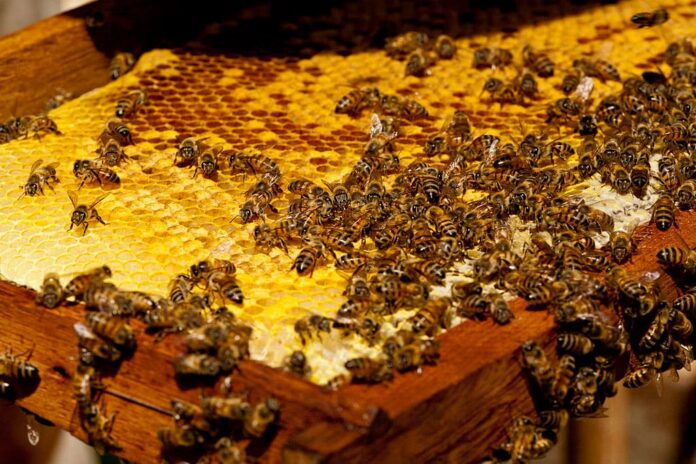
Also known as Killer Bee, the Africanized honey bee is a hybrid of the western honey bee species with European honey bees. The one interesting thing about them is that they can chase a person up to 400 meters. Plus with their reputation for killing people every year, the whole swarm of them is bad news. Killer bees tend to swarm more frequently and go further than other types of honeybees. These dangerous bees usually chase people in a swarm made up of almost every member in their hive. When that happens, the victims could be stung hundreds or even thousands of times. One bad case was a man in Texas who died after a swarm of killer bees stung him more than 1,000 times.
2Army Ant
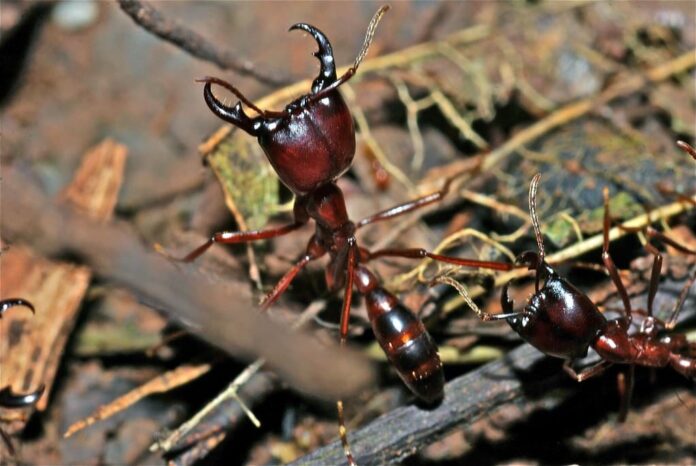
One ant is never a problem, things only get nasty when they team up and attack all together at once. Army ants are swarm raiders that hunt in massive groups above the ground. The unique thing about this ant species is that they don’t have a permanent home, but they move constantly as a colony. That is even more dangerous because they are very cautious and always ready to march and attack. The name definitely rings a bell, doesn’t it? Also, army ant refers to over 200 species in different lineages that forage in groups known as “raids”.
Army ants have small yet powerful jaws that they use to rip apart prey that they come across along the way. With the reputation as destroyers, the marching column of these predators is a threat to all lives. Also, they can overcome almost any obstacle that they face along the way. When faced with small bodies of water, the ants can cling together with their claws to form a living bridge. With the bridge, the colony can cross so that they can search for more food. These eating machines are dangerous for most lives on the ground that crosses their path, but not so dangerous for us humans.
3Cockroach
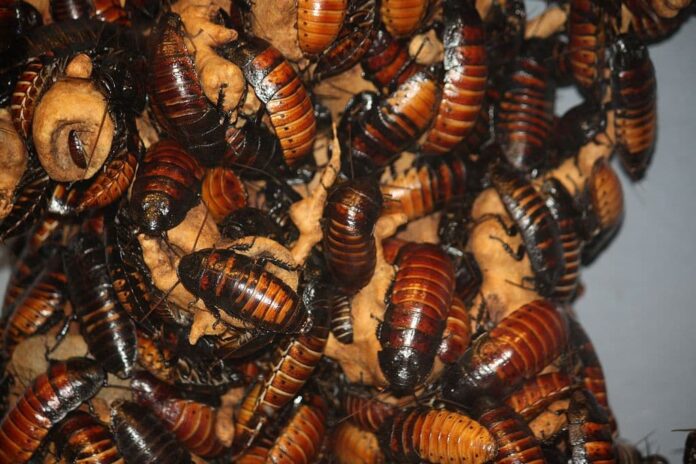
Many of us are not big fans of cockroaches, let alone seeing a whole swarm of them in the house. That is not a very pleasant sight to see or experience. Cockroaches are social insects with emergent behavior, and there are times when a swarm of them emerges and freaks people out. Cockroach swarms happen once in a while, and that is not so nice to experience. Cockroaches can wreak havoc in the house, and there are many different ways for them to enter your home. From the outside through cracks and vents to drain pipes, those are like open doors for them. These dirty pests are nocturnal, it could mean they were likely forced out by overcrowding if you see a few in the daytime. And that is a possible sign of severe infestation, and that is not a good thing to have in the house.
4Fire Ant
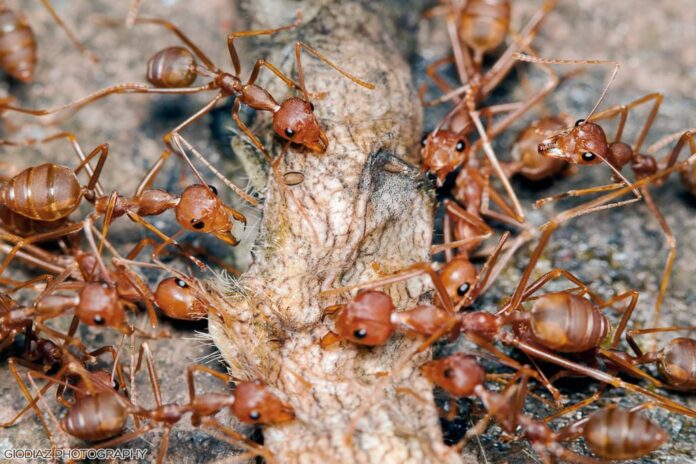
One single fire ant can already cause a painful bite that can leave red welts on our skin for hours. Imagine hundreds of them swarming your legs and stinging you all at once with those nasty bites. There are many reasons why fire ants swarm such as food hunting, mating, indoor swarming, and more. When none of the mentioned is the case, fire ants swarm to protect their colony when they sense danger. If someone kicks their mound or does anything to disturb their colony, large swarms of fire ants will march out. That is when the terror begins because fire ants won’t stop unless the invaders go away from their homes. Naughty kids who love to mess around with ant’s mounds are one of the common victims of their bites.
Also, fire ants are sensitive to vibration or movement so they tend to sting when the object they are on begins to move. As we know, the person moves when fire ants swarm up on their leg. That makes the ant bite and sting which triggers the others ants to do the same thing. Fire ant swarms are one of the most dangerous insect swarms because they can cause severe pain. Even healthy individuals may experience severe reactions such as anaphylactic shock if they suffer from multiple stinging incidents. As for very young and old people and those with suppressed immune systems, they tend to react severely to one or more stings. Very few people are killed by the ants due to the allergy to the venom of the fire ants. The good thing is people who live in colder climates are unlikely to have such painful experiences.
5Locust
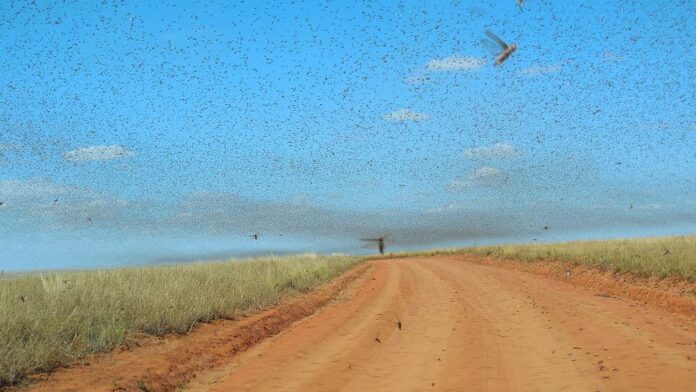
Looks like grasshoppers but more like pests, locusts always have a swarming phase despite the fact that they are solitary. Most locusts have swarms, but desert locusts form the most dangerous insect swarms among other members of their family. They don’t bite people, but they will swarm into people’s fields and eat all their crops, starving them. Not to mention that locusts have formed plagues since prehistory, especially in ancient Egypt, these insects are dangerous. When resources become scarce to an overcrowded population of locusts, they move in large numbers to find food. These dangerous insect swarms often raid people’s vegetation, farm, and fields with greeneries that they can feed on.
Desert locusts can form the most dangerous swarms due to the fact that they can fly rapidly across great distances. Locust swarms can march hundreds of miles, consuming every last leaf and crop in their path. Each desert locust swarm can be made up of 150 million locusts, and they cover the ground and sky like a dark cloud. Each swarm can eat the same amount of food in one day as about 35,000 people. As for now, there are hundreds of billions of locust swarms invading many countries in East Africa since the beginning of 2020. This will probably cause food crisis if there is no effective method to keep the swarms under control.
6Termite
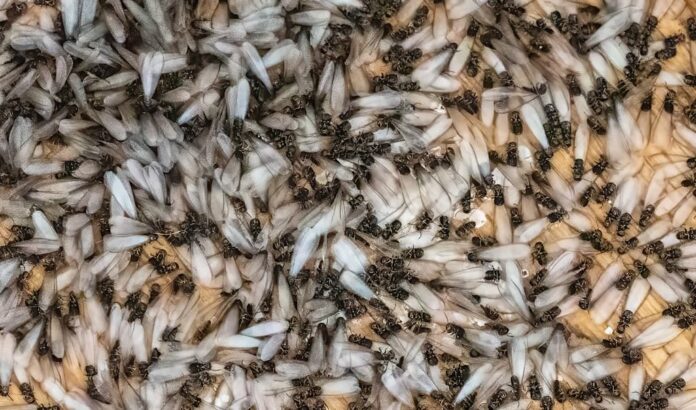
Termites are known as pests as they eat wood and disturb our home with their colony. A swarm of termites does not attack us, but it is more like they choose us. Termites swarm after their original colony has reached a certain capacity level and is ready to expand. So if you see a termite swarm nearby your house, your home could be their next host. You will see termites swarm when the weather begins to get warm, usually at the beginning of spring after rain. Those termites you see are the ones looking to begin their own new colony. So if you see a swarm of termites around your home, there is likely a well-established colony of termites living in or near your home. That can also be the most visible sign of a termites infestation, so you should call in an expert to solve the problem.
7Yellow Jacket
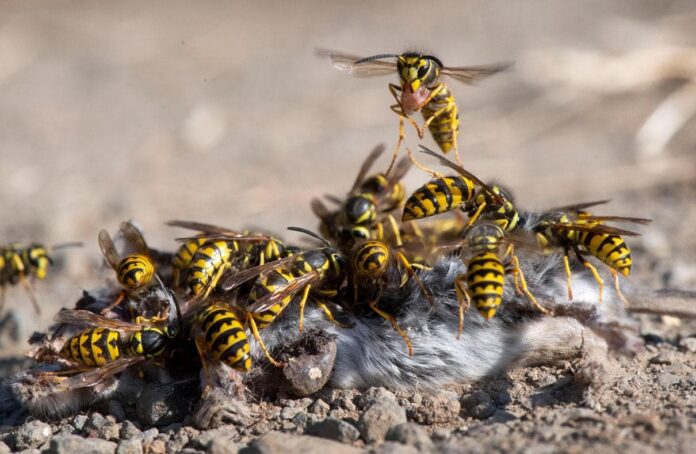
Yellow jackets are very aggressive pests that are gifted with painful stings, and agonizing bites. With their ability to terrorize others, yellow jackets love to hang out in the backyard, at picnics, and outdoor areas. Usually in June or July, yellow jackets are drawn to protein sources like hamburgers on the barbecue grill. That is when people got stung by the most. When sting, they often bite to get a better grip to jab their stinger which they thrust numerous times. You do not need to provoke them to get stung, just walking near their nears can easily cause an attack. Attacks from one single yellow jacket are not so bad, but they prefer to call their friends in the colony to join in. When that happens, victims usually experience severe pain, or even worse, death.
A swarm of a yellow jackets can be up to 10,000 individuals, biting and stinging the victim altogether, at once. Since they build their nests both on trees and underground, the chances of accidentally disturbing ones are also very high. Ground vibration can also trigger attacks from the underground nests, so mowing lawns can be hazardous during the late summer. Late summer is when the colony of the yellow jacket is large, so the attack is more deadly. A perfect example was in 2002 when an elderly man was doing yard work when he disturbed a large nest of yellow jackets. He was immediately swarmed and stung hundreds of times, he was found dead an hour and a half later. The insects were still swarming over his body and raiding his mower.
Related Post: Insects That Deliver Excruciating Pain



